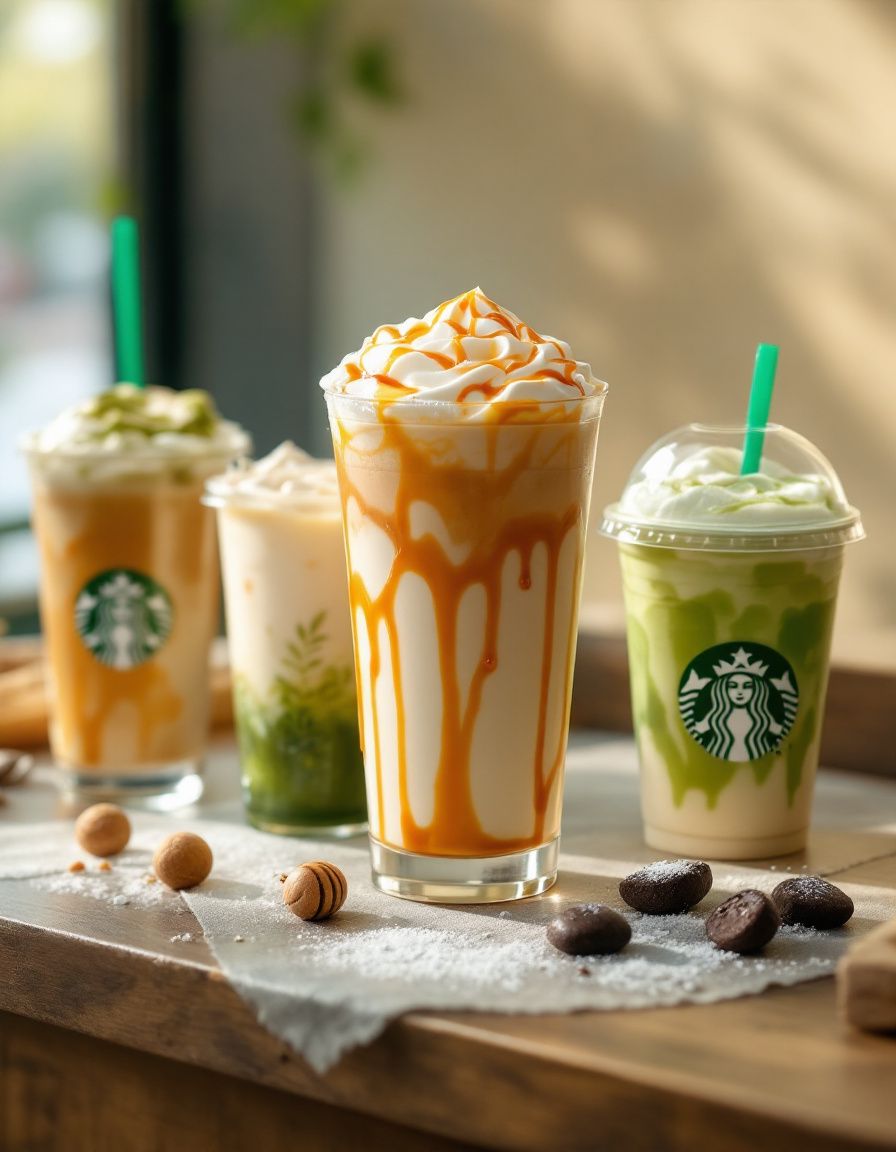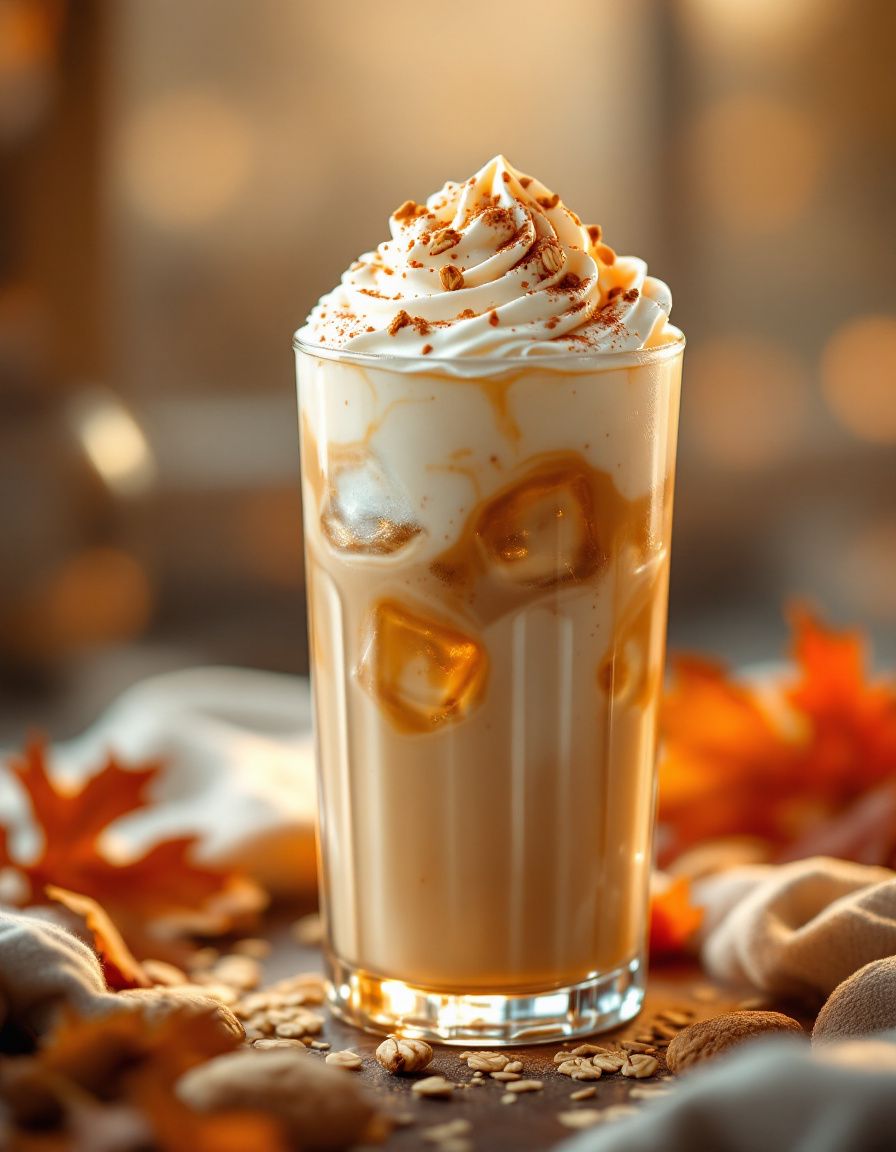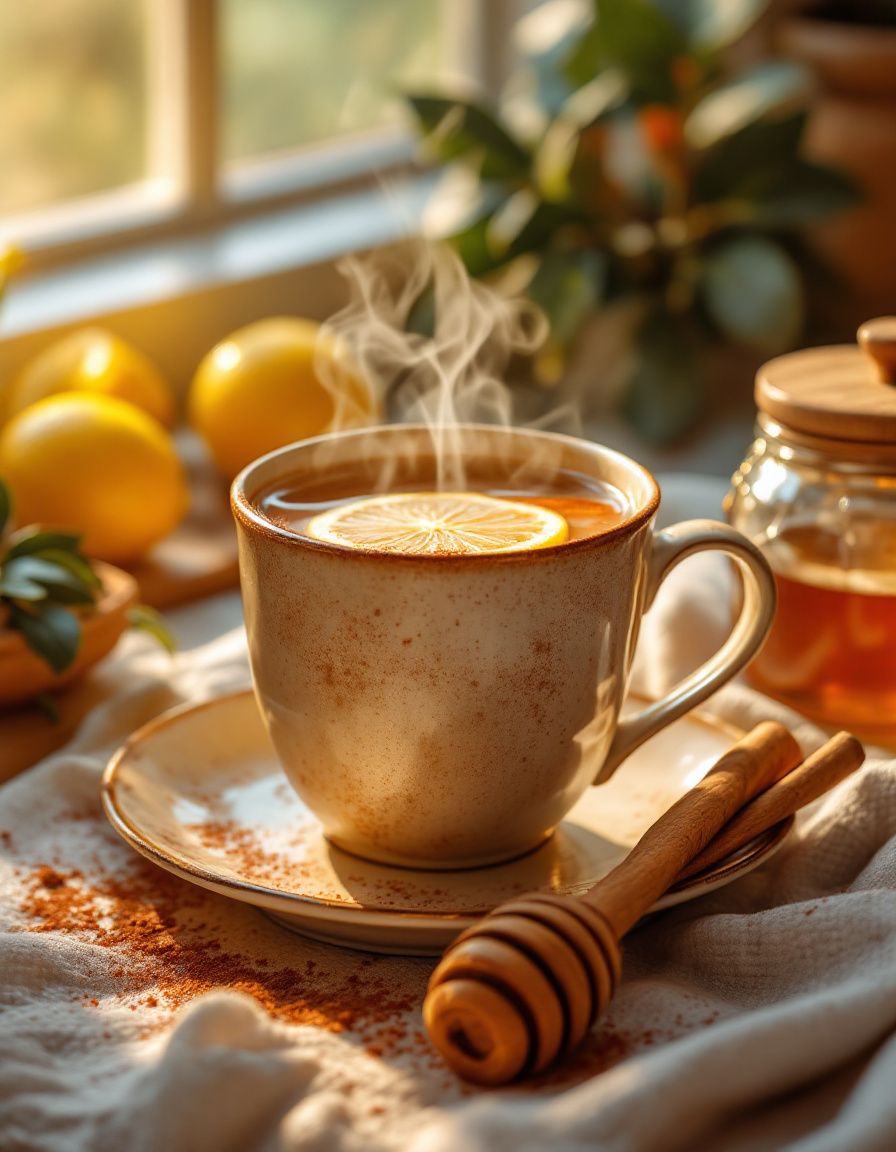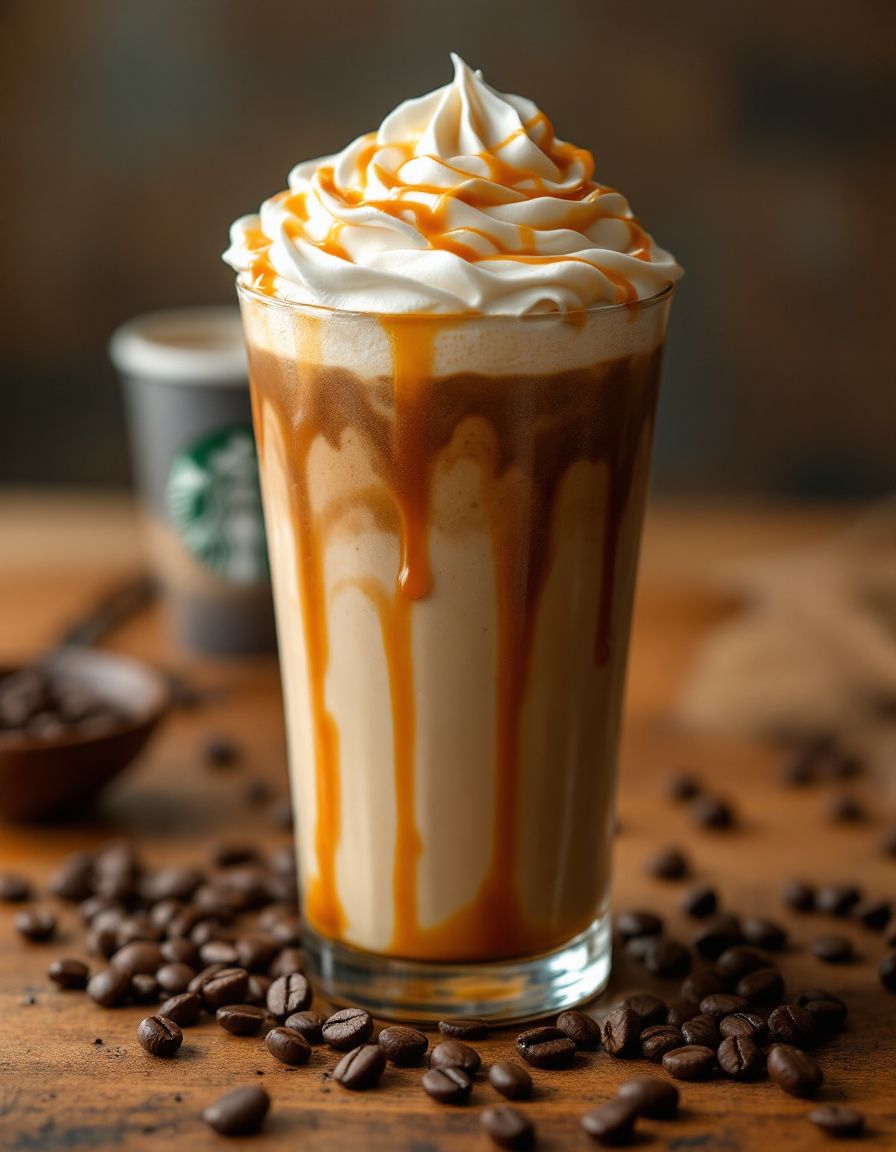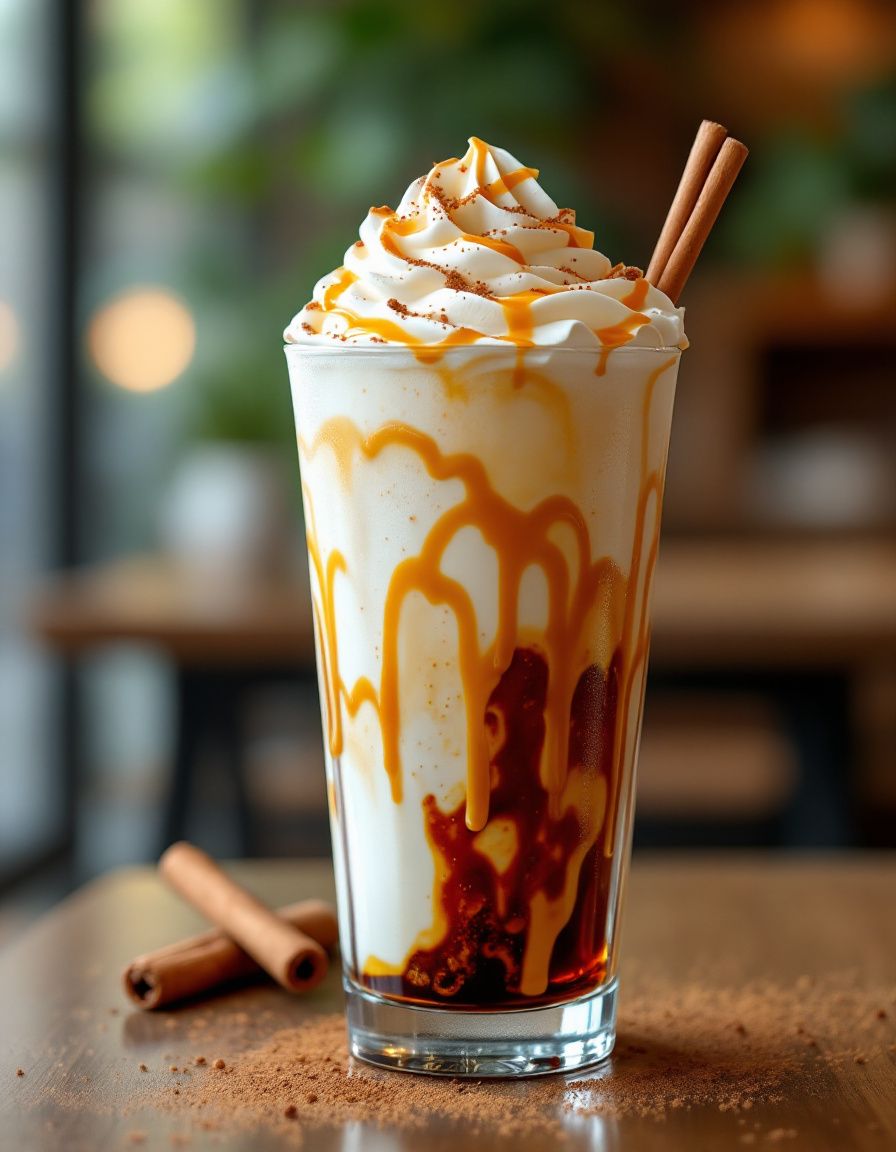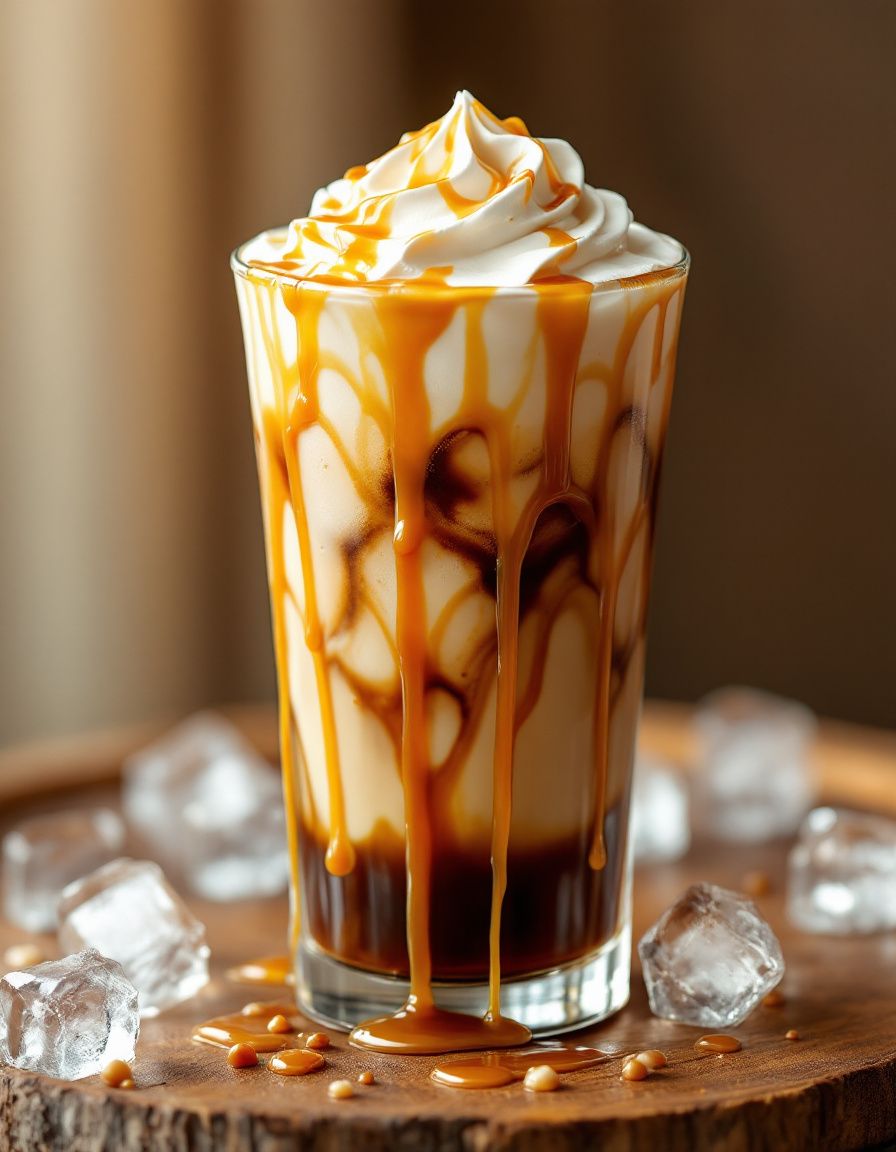Your Sign As A Starbucks Drink: A Fun and Flavorful Twist!
Welcome to your new favorite recipe: Your Sign As A Starbucks Drink! This fun and exciting concoction not only lets you enjoy the delightful flavors associated with your zodiac sign but also creates a social bonding moment for friends. Each drink is tailored to match the personality traits and vibes of each astrological sign, delivering an experience as unique as the individual it represents. Get ready to indulge your taste buds and star-gaze with this whimsical beverage concoction!
The delightful aroma of freshly brewed coffee, mingled with the sweetness of syrups and garnishes, beckons anyone who walks by. Picture yourself sipping a creamy caramel drink that screams indulgence or a vibrant berries blend that pops with color and personality. This recipe is not only visually stunning but also delivers a flavor profile that aligns with the astrological characteristics—rich for those earth signs, light and airy for air signs, and sweet and fruity for fire signs. Whatever your sign, there’s a drink waiting just for you!
Quick Recipe Highlights
- Flavor Profile: Expect a delicious mix of flavors that dance in your mouth, from earthy coffee notes to vibrant fruity accents that reflect your personality.
- Texture: A perfect harmony of creamy and refreshing, these drinks provide a well-rounded mouthfeel that’s satisfying and indulgent.
- Aroma: Each sip brings an inviting aroma that is both invigorating and comforting, luring you into a moment of tranquility.
- Visual Appeal: These drinks are a feast for the eyes, often garnished with colorful fruits and topped with whipped cream, making them Instagram-ready!
- Skill Level Needed: This recipe is easy enough for beginners, requiring only a few simple steps to create a delicious drink.
- Special Equipment: A few necessary tools include a blender, coffee maker, and some fun garnishing items to make everything pop!
Recipe Overview
- Difficulty Level: Easy enough for anyone to attempt! The most complex part is choosing the perfect combination of flavors to match your sign.
- Category: This recipe falls under beverages and makes for a wonderful refreshing drink any time of the day.
- Cuisine: This recipe has Western influences, particularly inspired by popular coffeehouse drinks predominantly found in Starbucks.
- Cost: The ingredients are cost-effective, with a total expenditure of approximately $10 for multiple servings.
- Season: Ideal for all year round but particularly refreshing during the warmer months.
- Occasion: Perfect for gatherings, birthday parties, or simply treating yourself and unwinding after a busy day.
Why You’ll Love This Recipe
Indulging in Your Sign As A Starbucks Drink offers not just fun flavors but a journey through taste and texture. Each sip takes you on a path inspired by astrological influences, making it a unique experience that resonates with your personality traits. As these drinks cater to diverse palates, they are sure to be loved by everyone involved and spark engaging conversations.
Preparation is a breeze! With minimal time needed, just blend up your chosen ingredients and voila! You have a magical drink ready to be enjoyed at home or shared among friends. Making these drinks at home not only saves you money compared to purchasing them at a café but also allows for flexibility in adjusting flavors and ingredients to suit personal preferences.
With variations for dietary considerations and flavor preferences, these drinks can be adjusted to meet specific health needs, accommodating everyone from those watching their sugar intake to those who are dairy-free. The ability to personalize the drink to your liking makes it even more appealing.
Think about the unforgettable bonding experiences as you and your friends select drinks representing your signs! Engaging in this shared activity opens the door to discussions about astrology, personality traits, and life in general, fostering connections in a lighthearted setting.
Finally, these Starbucks-style drinks are a cost-effective solution. With some creativity, you can replicate the coffeehouse experience at home without overspending. Gather some friends, create different variations, and enjoy mixing drinks that suit your friends’ personalities!
Historical Background and Cultural Significance
The origins of personalized drinks trace back to the advent of specialty coffee shops that began popping up in America in the late 20th century. Starbucks, in particular, revolutionized the coffee game, making coffee not just a beverage but an experience filled with tastes and social interaction. The blending of astrology with drink recipes is a fun, modern twist that adds a layer of personalization to the cafe experience.
These drinks also symbolize the cultural significance of individual traits attributed to astrology, where personality influences preferences. The zodiac has intrigued many for centuries, adding depth and connection to our culinary experiences. Fusing these cultural narratives with trendy beverages showcases how food connects us to both tradition and modernity.
As this recipe evolves, there are increased trends in astrology and personalized diets. Infusing zodiac themes into drinks allows a blend of fun experimentation with taste, attracting a wide range of enthusiasts who appreciate craftsmanship in food and beverage.
Regional variations may emerge as more cafés look to customize offerings based on local astrology and taste preferences. Being able to embrace local flavors while maintaining the core essence of the drink fosters creative culinary expression!
Ingredient Deep Dive
Main ingredients such as coffee and flavored syrups play key roles in creating Your Sign As A Starbucks Drink. Coffee has a rich history, originating from ancient coffee forests in Ethiopia. Packed with antioxidants, caffeine can enhance mental focus and improve mood.
When selecting coffee, opt for high-quality beans or ground coffee for the best flavor. Proper storage in a cool, dark place ensures freshness. For flavorings, choose natural syrups, which add an artisanal touch and can often cater to dietary needs with sugar-free options available.
Fruits and creams utilized in this recipe enhance both the taste and visual appeal. Fruits like strawberries or blackberries can be found almost anywhere and their vibrant colors complement the drink remarkably. Not only do they impart fruity flavors but they also add necessary vitamins that are crucial for a balanced diet. Be creative with storage by freezing fruits for up to six months, preserving that fresh taste!
Common Mistakes to Avoid
- Over-extracting coffee: Brewing coffee too long can lead to bitterness, ruining the drink’s intended flavor profile. Stick to the recommended brewing time.
- Using expired ingredients: Ensure all syrups, creams, and coffee are fresh to enhance flavor and quality.
- Ignoring proportions: Balance is crucial! Follow the recipe closely, especially in ratios of sweeteners to the base drink for optimal flavor.
- Not pre-chilling smoothies: If using frozen ingredients, allow time for the drink to chill before serving, preventing dilution of flavors.
- Skipping garnishes: Forgetting to garnish can detract from the visual appeal and the overall experience. Be creative with your toppings!
- Rushing the blending process: Blending slowly increases the drink’s smoothness, creating a better mouthfeel and consistency.
- Overusing dairy: Too much cream can overwhelm the drink, so keep it balanced according to taste.
- Neglecting personal adjustments: Each sign has its preferences! Don’t forget to adjust recipes based on personal tastes or dietary needs.
- Not using quality ice: Cheap ice can have impurities; using good quality ice enhances the clarity and flavor of the drink.
- Disregarding the temperature: Serving the drinks too warm or cold can affect enjoyment; balance is key!
Essential Techniques
Creating Your Sign As A Starbucks Drink involves a few essential techniques. Blending is integral, creating a smooth, well-mixed consistency. Always start with the base ingredients in the blender first, adding ice and liquid afterward to produce a stunning blend. Keep a keen eye on the texture; it should be creamy, not too watery.
Another vital technique is brewing perfect coffee. Medium grind coffee beans are best, allowing optimal extraction of flavors without bitterness. Monitor brewing times to avoid over-extraction, ensuring each cup remains enjoyable.
Garnishing is an art form! Use fresh fruits and whipped cream to create a vibrant look that is irresistible. Get creative; layered ingredients in clear glasses showcase the beautiful colors of your drink, adding a visual element to your serving.
Pro Tips for Perfect Your Sign As A Starbucks Drink
– Experiment with flavors! Don’t be afraid to mix various flavors and syrups to discover your preferred taste combination.
– Start simple. Before diving deep into complex drinks, master one drink at a time to ensure consistency and quality.
– Invest in a high-performance blender; a good blender will blend ingredients smoothly, essential for that café-style finish.
– Don’t forget about texture! Adding ice in moderation maintains the drink integrity without causing dilution.
– Use unconventional garnishes! Candies, dried fruits, and edible flowers can elevate the visual appeal significantly.
– Plan ahead for parties! Prepare drinks in advance and store them in the fridge, adjusting the flavors just before serving for optimal freshness.
– Always serve immediately! The best experience is when drinks are fresh; sipping on a cold drink on a hot day is hard to beat!
– Lastly, get feedback from friends! Be sure to share your drinks and take note of what they loved or what could be improved.
Variations and Adaptations
Your Sign As A Starbucks Drink can be tailored for various occasions and dietary restrictions. For those who prefer a non-caffeinated option, consider substituting coffee with herbal teas or matcha for robust flavors without caffeine. During festive seasons, introduce seasonal spices such as cinnamon or nutmeg to evoke the holiday spirit in your drink!
For anyone looking for lower-calorie options, sugar-free syrups are a splendid addition and can enable everyone to enjoy their drink without excess calories. In terms of flavor variations, consider integrating fun toppings like crushed cookies or sprinkles that both kids and adults will adore!
If you’re hosting a summer gathering, introduce light fruit-infused cocktails for an adult twist! Enhancing your drink with alcoholic options—such as a splash of rum in a tropical drink—can ramp up the fun for adult gatherings.
Experiment with different serving styles too. Frozen versions of the drinks are perfect for a blend of fun and nostalgia, and hot variations can transform the same recipe into cozy winter treats, showcasing the drink’s adaptability.
Serving and Presentation Guide
Presentation is key for Your Sign As A Starbucks Drink. Use high-quality glassware that showcases the beautiful colors of your concoction. Layering ingredients creates visual depth; try pouring the drink carefully to create distinct layers. Garnish with fresh fruits or whipped cream, adding a sprinkle of cocoa or colored sprinkles for a touch of elegance.
For a modern twist, consider using mason jars, which add a rustic feel that is trendy and chic. Serve with colorful straws for a charming touch, improving the social aspects of enjoying the drink among friends.
Temperature matters! Cold drinks should be served chilled with plenty of ice, while warm versions should be kept at a temperature that enhances enjoyment without scalding. Remember to consider portion sizes; sharing is caring, and serving in small glasses encourages sharing and conversation during gatherings.
Wine and Beverage Pairing
Complementing Your Sign As A Starbucks Drink with the right beverages can elevate the experience. For an unlikely twist, pairing with aromatic white wines, like a Sauvignon Blanc, harmonizes beautifully with fruity flavors in the drink. For coffee-based drinks, craft brews featuring similar flavor notes or a rich stout can create a delightful transition.
If you’re serving these drinks during a brunch gathering, pairing with mimosa-style drinks adds sophistication and charm. In contrast, consider sparkling waters infused with flavors like rosemary or grapefruit to bring additional layers of taste without the sweetness.
For those who prefer non-alcoholic alternatives, herbal teas can perfectly complement these drinks, highlighting their personalities while allowing a unique tasting experience.
Storage and Shelf Life
Your Sign As A Starbucks Drink is best enjoyed fresh, but if you need to store leftovers, keep them in an airtight container in the refrigerator. This will maintain the quality for up to 24 hours, after which flavors may degrade. Separation might occur, so give your drink a gentle shake before serving.
If you love the convenience of making drinks in bulk, consider freezing them into molds! These can be stored for up to three months, providing a wonderfully refreshing treat whenever you desire. When ready to enjoy, simply defrost your molds and give them a quick blend for that freshly made taste.
Signs of spoilage include off odors, discoloration, and changes in texture. Always check before serving leftovers to ensure you and your guests enjoy a fabulous drink experience.
Make Ahead Strategies
To make meal prep easier, consider creating flavor bases for your drinks in advance. Preparing your flavored syrups or base mixes and storing them in the refrigerator allows for quick assembly later. Just mix with coffee and ice for a prompt serving time!
Always prepare fruits ahead of time. Wash, slice, and store them in airtight containers in the fridge to reduce prep time during gatherings. When making larger batches, ensure that you follow the assembly steps in order to maintain the flavor profiles intact.
Before serving, make sure all your ingredients are chilling in the fridge, particularly when preparing cold beverages. This enhances freshness and taste and provides a comforting sip during warm days.
Scaling Instructions
If you’re looking to scale Your Sign As A Starbucks Drink, reducing or increasing batch sizes is easy! For halving the recipe, adjust each ingredient proportionately, ensuring you maintain the flavor balance for the zodiac drink.
Doubling or tripling the recipe may require equipment adjustments—especially blenders or ice crushers. Always monitor the blending time closely to ensure the texture remains consistent across larger batches.
Consider timing modifications; while prepping, allow for added time to properly blend larger volumes. Storage considerations are key; use larger containers that ensure the quality of flavor and ingredients is preserved during chilling.
Nutritional Deep Dive
Your Sign As A Starbucks Drink provides a delightful array of nutrients depending on your ingredients. A typical coffee-based drink supplies caffeine and antioxidants while fruit additions provide vital vitamins and minerals. These drinks can also work successfully within various dietary frameworks.
For macro breakdown, depending on your base (whether coffee, cream, or fruit!), the nutritional details can vary widely. Whenever adding whipped cream or sugary syrups, monitor the balance to maximize enjoyment without compromising health.
Micronutrient analysis is equally important. Utilizing fruits, you’ll benefit from a range of vitamins such as Vitamin C and potassium, improving overall health while enjoying a delightful beverage.
For those mindful of dietary considerations, make notes on portion size—being mindful ensures you enjoy indulgence while still working within dietary goals. Emphasizing quality ingredients allows everyone to relish in the delightful experience of starry drinks!
Dietary Adaptations
Your Sign As A Starbucks Drink adapts fluidly across various dietary preferences. For those requiring gluten-free options, ensure syrups are verified to be gluten-free and skip cookie garnishes for safe indulgence without compromise.
Dairy-free adaptations can be effortlessly integrated by substituting regular cream with plant-based alternatives, like almond or oat milk. Many consumers also appreciate lower-carb adaptations; swapping out syrups for natural sweeteners can maintain the sweetness without added sugars.
Vegan options can easily be achieved by sourcing plant-based whipped creams or skipping creams entirely while boosting fruit content. Paleo diets can also be supported through smart ingredient choices, emphasizing whole and unprocessed foods—all birds of a feather!
Low-FODMAP adaptations consider avoiding certain high-FODMAP fruits, ensuring each taste is still spectacular while being gut-friendly.
Troubleshooting Guide
Should you encounter texture issues, often this stems from ice dilution. Keep ice sizes consistent; opting for larger ice cubes or pre-chilling ingredients prevents unwanted melting. Remember that the blending time matters — over-blending can lead to watery drinks, while under-blending results in chunky inconsistency.
Flavor balance can be easily adjusted by tasting during preparation. Add flavors gradually to find that perfect harmony, ensuring the drink doesn’t become overly sweet or too acidic.
For temperature problems, always check ingredients before serving—cold drinks should be chilled to maintain a refreshing taste. Aim for optimal serving temperatures to increase overall enjoyment.
For equipment challenges, ensure all tools are readily available before beginning preparation. Familiarize yourself with the blender settings or coffee maker processes to prevent unwanted interruptions.
Timing concerns can be managed by prepping ahead, but always keep an eye on ingredient freshness and quality.
Recipe Success Stories
Our community has shared delightful feedback on Your Sign As A Starbucks Drink! Many users have created fantastic variations—using seasonal fruits and experimenting with homemade syrups. Each reader’s personalized twist has made the drinks more enjoyable while helping to forge connections among friends.
Many have also expressed joy around gatherings where these drinks became conversation starters, blending moments of fun with personal storytelling. Some even used photography tips to create stunning visuals that showcase their drink creations—perfect fodder for social media sharing!
Adapting recipes for specific dietary needs has also led to positivity among our readers. It showcased how easily inclusivity could become part of the cooking experience, especially when dietary restrictions are at play.
The enthusiasm and creativity did not go unnoticed. Regular feedback on community-driven events celebrating zodiac signs helped solidify connections among users and their interests.
Frequently Asked Questions
What are the best flavors for my zodiac sign?
Each zodiac sign is associated with unique traits, which translates into preferred flavors. For example, fiery signs like Aries may enjoy bold flavors such as spicy chai, while gentle earth signs may gravitate towards calming lavender lemonade.
Can I make this drink without caffeine?
Absolutely! Substitute coffee with herbal tea or a delicious fruit juice blend. Matcha is another great alternative, providing a burst of flavor while remaining caffeine-free.
How long can I store the drink?
The drink is best enjoyed fresh, but if stored appropriately in the fridge, it can last up to 24 hours. Note that flavors may change slightly over time.
Are there vegan options available?
Yes! Simply swap out dairy cream for plant-based alternatives, such as almond milk or coconut cream, and ensure your syrups are free from animal products.
What’s the best way to garnish these drinks?
Fresh fruits, edible flowers, and sprinkles are great choices! You can also use whipped cream or drizzled syrups for a creative touch.
How can I make my drink lower in sugar?
Opt for unsweetened syrups or natural sweeteners, such as stevia. You can also incorporate more fruit and reduce the syrup to balance sweetness without sacrificing flavor.
Can I use frozen fruits?
Definitely! Frozen fruits work wonderfully in this recipe. They can add a chill and creaminess to your drink, especially during warmer months.
How do I adjust the recipe for fewer servings?
Simply scale down the ingredients proportionately based on the number of servings you would like to prepare. Always taste test to ensure flavor remains intact!
Where can I find themed recipes for other zodiac signs?
Explore our blog for more fun recipes tailored to each zodiac sign! Each recipe reflects its unique attributes and flavors.
What equipment do I need?
Essential tools include a blender for smooth mixing, coffee maker for brewing, and measuring cups or a kitchen scale for precise ingredient tracking.
Can I customize my drink based on personal preferences?
Absolutely! This recipe aims at personalization, allowing you to alter ingredients and flavors based on your tastes while still encapsulating the essence of your sign.
Additional Resources
In addition to this recipe, you can explore a wide range of related drinks on our blog. Check out our technique guides for mastering drink preparation techniques and understanding ingredient information to enhance your culinary skills. If you’re ever in need of inspiration, our seasonal variations will help you keep your drink game fresh!
Consider exploring equipment recommendations to improve your kitchen experience. Investing in great blenders or coffee makers can elevate any homemade drink.
Join the Conversation
We invite you to join the community around Your Sign As A Starbucks Drink! Share your creations on social media, using our dedicated hashtags, and engage with fellow food enthusiasts! Don’t hesitate to post your delightful photographs—great images encourage conversation and idea sharing.
Drop your reviews and feedback about this recipe; your insights contribute to improving our community. Additionally, we encourage you to share your unique adaptations and personalized variations to stir creativity among fellow readers.
Dive into discussions about your sign, share recipe stories, and interact with others—together, we’ll celebrate the beauty of flavor in alignment with the stars!
The Recipe
Your Sign As A Starbucks Drink
Serves: 2
Prep Time: 10 mins
Cook Time: 5 mins
Total Time: 15 mins
Kitchen Equipment Needed
- Blender
- Coffee maker
- Measuring cups and spoons
- Ice cube trays
- Glassware for serving
Ingredients
- 2 cups brewed coffee, chilled
- 1/2 cup flavored syrup (vanilla, caramel, etc.)
- 1 cup almond milk (or any milk of choice)
- 1 cup fresh or frozen fruits (berries, mango, etc.)
- Whipped cream for topping
- Ice cubes
- Optional: Edible flowers for garnish
Directions
- Prepare the brewed coffee and allow it to cool in the fridge.
- In a blender, combine chilled coffee, flavored syrup, almond milk, and fruits. Add ice cubes to the desired thickness.
- Blend until smooth and creamy. Adjust the sweetness with extra syrup if needed.
- Pour the drink into glasses, and top with whipped cream and additional fruit or edible flowers as garnish.
- Serve immediately and enjoy the delightful flavors of your zodiac sign!
Recipe Notes
- Substitutions can be made for syrups and fruits, depending on your taste preferences!
- Feel free to adjust the quantities for serving size or flavor intensity.
- Experiment with different milk types and adjust sweetness with natural sweeteners for a healthier alternative.

